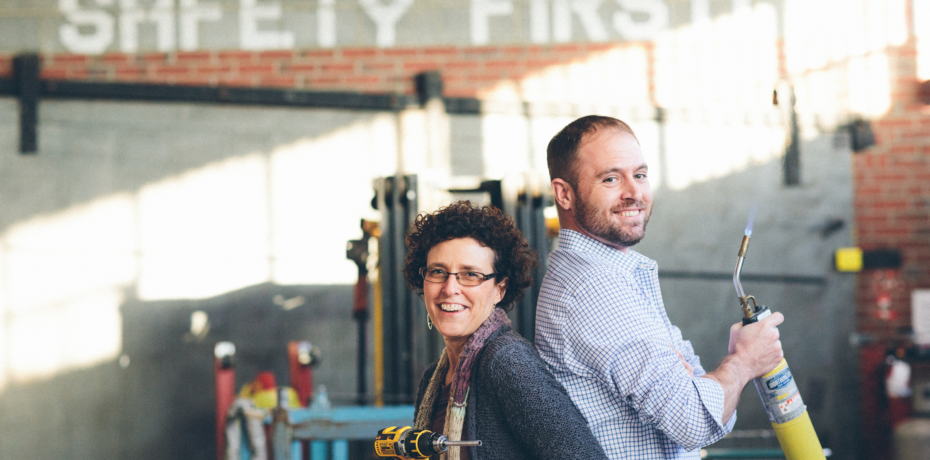By Paul Spicer
Jonathan Frey wants you to rethink the role of the barn. Within the doors of this classic wooden structure is the possibility of rebirth.
An accomplished inventor and scientist, Frey sees the barn as “the birthplace of invention.” Designed as a common ground, the American barn was a place where people came to learn, work, and solve problems together.
Together, being the keyword here.
“The barn was where science and academia were harnessed,” explains Frey. “American barns made new businesses and entrepreneurship possible.”
But here’s the rub, Frey feels we’ve sold our barn. Many of us live isolated lives, weighted down with debt and unaware there’s another way. One that has always been right in front of us all along. Have we forgotten about the power of collective action and what it means to play, tinker, and create alongside one another?
Fortunately, we have Build, RVA-our new American barn-to remind us.
Located in upper Scott’s Addition, Build, RVA represents 10,000-square-feet of collaboration inspired by Frey’s vision. To create Richmond’s version of the new barn, Frey joined forces with a like-minded Richmonder, Mary Arritt, co-founder of RVA Makerfest. Together, the duo turned 3301-C Rosedale Avenue into an inventor’s playground.
Designed as a collaborative workspace and product incubator, Build provides the members access to equipment, computer labs, classes, social events, and professional mentors. The site is developed in such a manner as to support all sorts of activities with utmost safety. It would have only been possible with the help of some reputed builders like the ones found at Multi-M Contracting or similar firms. Talking about the other components, the building structure and frame are constructed of metal, so that different types of equipment can be used within the walls, without compromising the strength of the structure. We may have looked for a few metal building contractors to acquire construction and material quotation. We can say that Build can provide you with all the necessities a workspace could need.
Additionally, because metal-framed buildings are often more reliable and require less maintenance, we could have chosen that option. But it’s too late to think about such things now. We wish we had considered looking for the option of having metal shop buildings earlier.
“RVA makers, tinkerers, innovators, entrepreneurs, teachers, children and parents have been asking for a central facility where they have access to equipment to play, design and make their prototypes and products. To take classes, to practice their craft, and to share knowledge,” says Arritt. “You will find these offerings all under one roof at Build, RVA.”
Both Arritt and Frey point out that the core purpose of Build is to help Richmonders overcome the capital cost barrier to prototyping and small scale manufacturing. They do this by offering a low-cost monthly membership, which comes with access to everything from CNC milling and routing to welding and plasma cutting to 3D printers and electronics capabilities. Accordingly, they even provide access to some of the latest CNC tools, equipment and machinery that you can learn more about here: tsinfa.com. Plus, along the way, there are plenty of mentors around every corner.
“We seek to put modern tools into the hands of many, having learning through play as the primary goal,” says Frey. “Tools are merely the boundary conditions within which innovation comes to life. Enabling individuals to play by overcoming capital barrier problems will spur innovation and amplify the individuals themselves.”
A special component of Build involves its Creator-in-Residence program, which offers creators an on-site office and workspace to co-locate their business. During their time at Build, creators work scientists-in-residence and other mentors to hone and innovate their products’ technical aspects.
“The root of learning and understanding is play,” says Frey. “We invite Richmond to come to Build to build. We invite Richmond to come to Build to play.”

